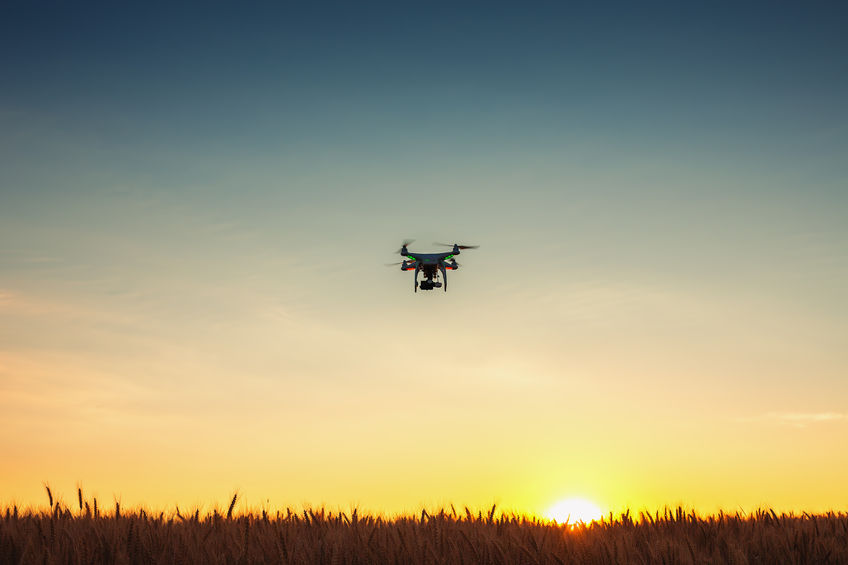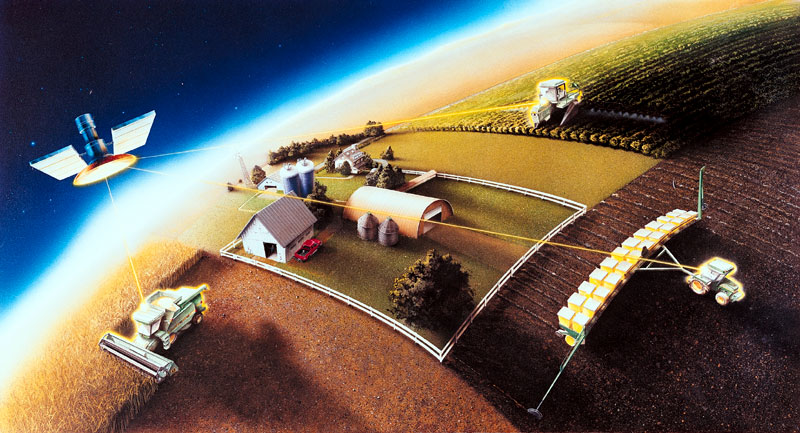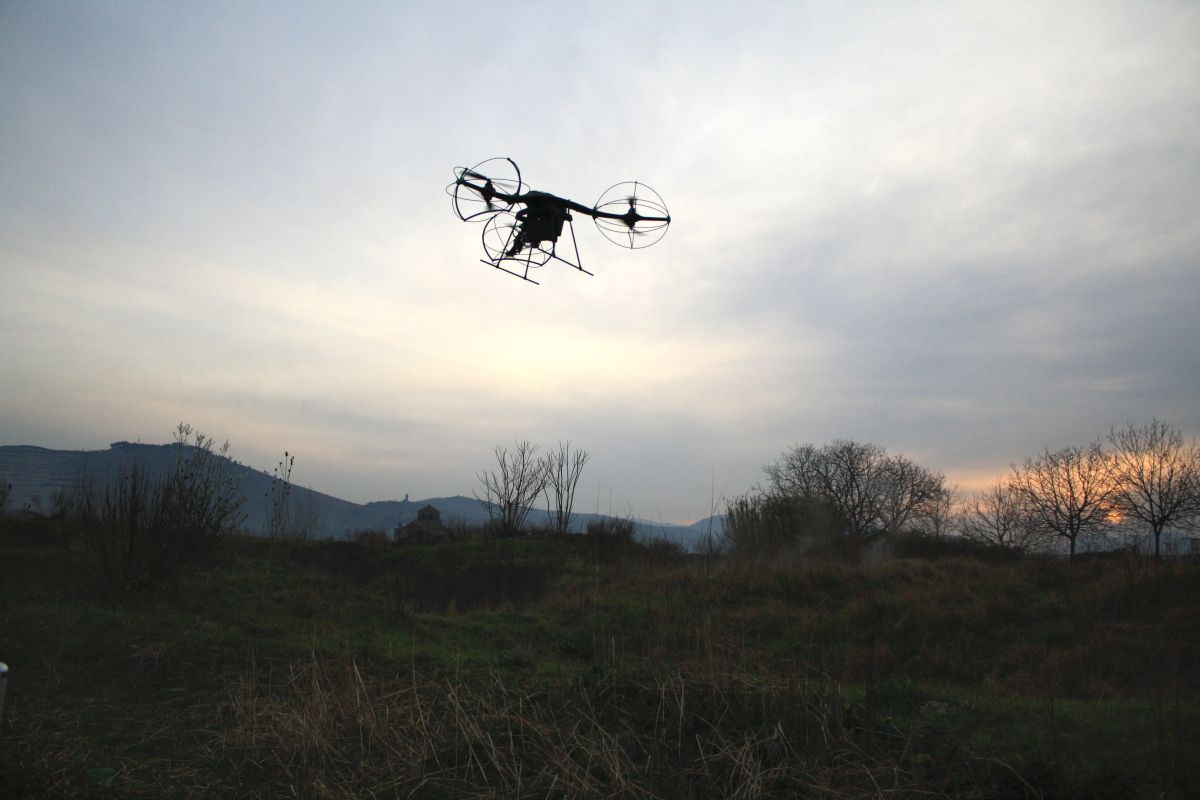
Farming has always had an intrinsic relationship with technology, with the last century seeing farm yields greatly increased by new methods and technologies.
From breakthroughs in nutrition, genetics and informatics to satellite imaging and meteorology, agriculture has seen vast improvements.
For the relationship to work, costs and the price of end products must not increase, whilst allowing yields to rise.
This is particularly important moving forward as the Food and Agricultural Organisation of the UN (FAO) has predicted that in order to keep pace with population growth, food production must increase by 70 percent by 2050.
The agriculture industry is faced with a number of challenges in achieving these imperatives with limited availability of arable land; global climate change; the growing scarcity of water; the price and availability of energy - particularly from fossil fuels; and the impact of urbanisation on the supply of rural labour.
Technology will play a central role in helping to overcome these challenges while ensuring costs are kept to a minimum and this can already be seen with the arrival of precision agriculture in the milking industry, for example.

By combining scientific expertise, soil chemistry and disease management with intelligent sensors and information technology, farmers have been able to simultaneously increase crop yields and reduce waste.
For farmers and growers, depending on the type of farming involved, special sensors collect data regarding soil and crop behaviour, animal behaviour, machine status, storage tank and outbuildings status from remote sites.
Collected data, can not only detect signs of disease in crops and animals much sooner than they would otherwise become noticeable, but can also provide greater insight into farming activities to make process improvements.
Other valuable data that can be harnessed includes weather conditions and forecasts, scientific crop information, historic yield, plant and animal diseases and their symptoms, and regional rules and regulations such as which chemicals can be applied and when.
Precision farming is not limited to a particular size or type of farm; it has a number of different applications that can be utilised in a number of different farming areas:
Large field arable farming
Precision agriculture follows the crop growth cycle in all its steps from seeding, planting, application of fertilisers and pesticides, through to harvesting.
Currently, farm vehicles used in large field arable farming are becoming more sophisticated with state-of-the-art functionality, equipped with GPS, sensors embedded in different parts of the vehicles, sophisticated data visualisation tools on board, and the ability to transmit data.
Telematics and tracking technologies continuously record location and travel routes to avoid going over the same patch twice, record working times and utilisation of
vehicles, as well as their condition in real-time.
New products are also able to use visualisation technologies to detect weeds, which the vehicle then destroys on the spot.
Data returned to the equipment’s manufacturer can also provide useful information on wear and tear, aiding in the development of improved designs.
Small to medium sized field arable farming
Medium and small sized fields can benefit from connected and intelligent vehicles, in the same way large field arable farming can.
However, they also need sophisticated sensing activities at soil and plant level. Spatially-enabled mobile sensing technologies provide detailed analysis of field conditions such as the humidity in different soil layers, the amount of nutrients in the soil, temperature, as well as rainfall, wind direction and speed.

Correct preparation is vitally important due to the diversity of soils; a single field may contain multiple soil types.
Livestock and animal monitoring
Precision farming solutions are deployed in order to monitor the location and the health of livestock in a number of ways.
In the case of cows, sensors are placed on or within the animal and an alert is sent wirelessly to a tag mounted on the cow’s ear.
The data is then sent to the farm management information system, which can also be available on the farmer’s mobile phone or tablet.
Oestrus monitoring allows farmers to know the precise time when the animal is on heat ready for insemination.
A sensor mounted in a collar worn by the animal can detect lameness and other ailments and a rumen monitoring system records acidity levels and temperature within the animal, enabling farmers, vets and nutritionists to achieve optimum care conditions.
For horses, a sensor-carrying belt attached to the animal may detect unusual behaviour which may be a sign of disease.
And for poultry farming, sensors can monitor the animal’s health and welfare, often affected by the intensive and crowded conditions in sheds.
Indoor horticulture
Greenhouses need frequent monitoring to ensure any failure is detected immediately and a range of conditions are constantly under control.
Indicators such as solar radiation, temperature, humidity and air quality, presence of mildew or pests must remain within the necessary ranges.
Continuous sensing and communication of data sensed with the farm management systems ensures these conditions are met.
Return on Investment
The Return on Investment (RoI) in precision farming systems is not always easy to quantify in terms of actual numbers.
Farmers are reluctant to invest in radically new technologies unless there is a proven business case.
However, the market is starting to show case studies in which the RoI is real.
The benefits for farmers are numerous, including savings of time and money, as well as limiting their environmental impact.
Using sensor technology means that toxic spraying can occur only when absolutely necessary.
Other applications may alert farmers in case of dry soil and other conditions that may require attention or human intervention.
In other words, everything about the use of data and analytical systems can be used to inform decision making, in order to make better use of land and resources.
Monitoring Olive Groves in Italy
Farms and greenhouses are generally small compared with large arable fields.
Because of the crops’ high value, losses are proportionally high and likewise savings from reduced spoilage are also high.
The olive fruit fly Bactrocera Oleae is a serious pest causing major losses of the crop as Oil extracted from the infested fruit has a lower quality.
TeamDev, an Italian software company, developed a decision support system based on data collected by Libelium’s Sensor Platform.
The network collects ambient and weather data including temperature, humidity, rainfall, atmospheric pressure and integrating it with other information using software developed for farming management.
The company worked with an organisation of Umbrian olive producers to develop a web-based system to understand the behaviour of the pest.
The software created the model of fly diffusion based on the conditions in each olive grove.
As a result, the understanding of the growing and environmental conditions enabled better control of the pest. The technology investment was recovered over one year.
The Way Ahead
The smart farming vision is starting to show its potential beyond connected and intelligent vehicles, with application areas such as horticulture, high-valued crops and precision livestock farming, all able to benefit from precision agriculture.
The benefits and the RoI of smart farming in those areas are also starting to become apparent.
The farming community is moving in different directions. On one side a minority, digitally aware and with funds, is appreciating the transformative power of smart farming.
But on the other side, a sceptical community that wants to understand more about it.
Moving forwards with the smart farming vision means having clear explanations of its impact to the farming community.
The engagement with farmers on the positive impact is a fundamental step.
Farming associations and the smart farming ecosystem should strongly focus on education in order to move from scepticism to enthusiasm.
